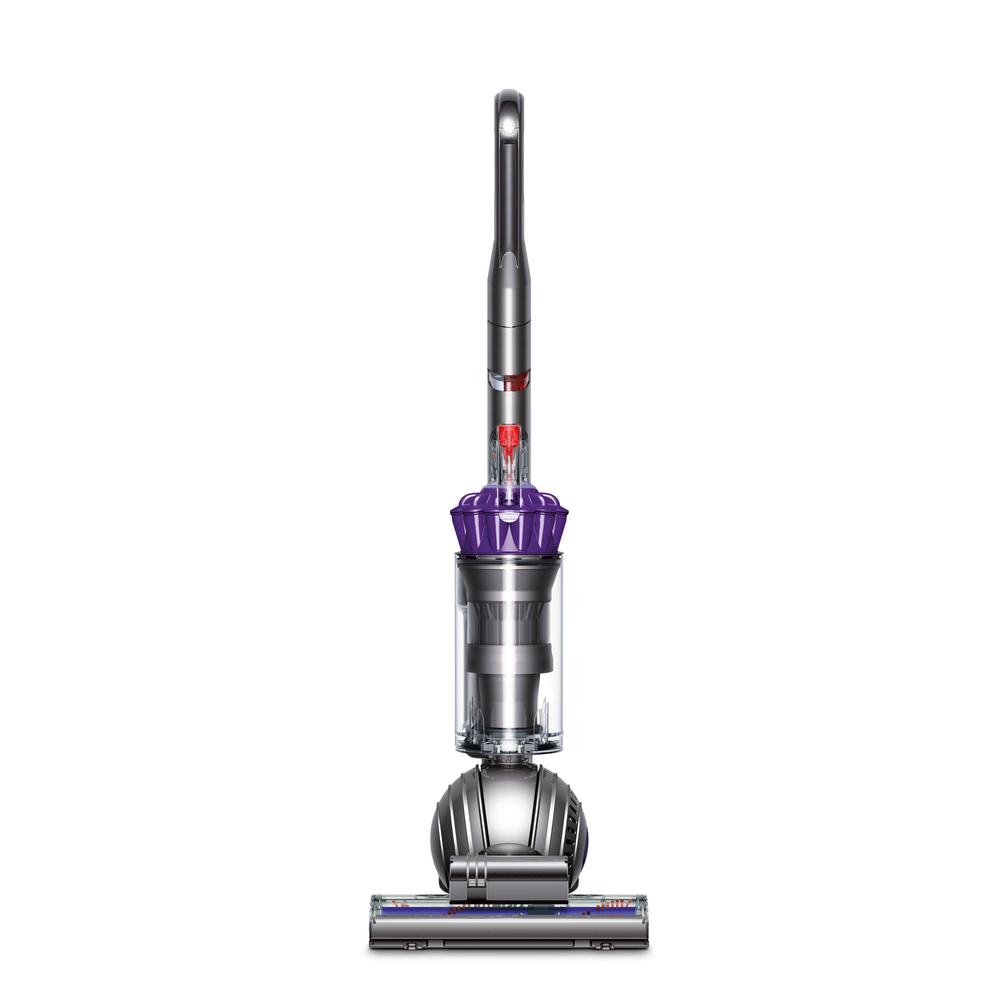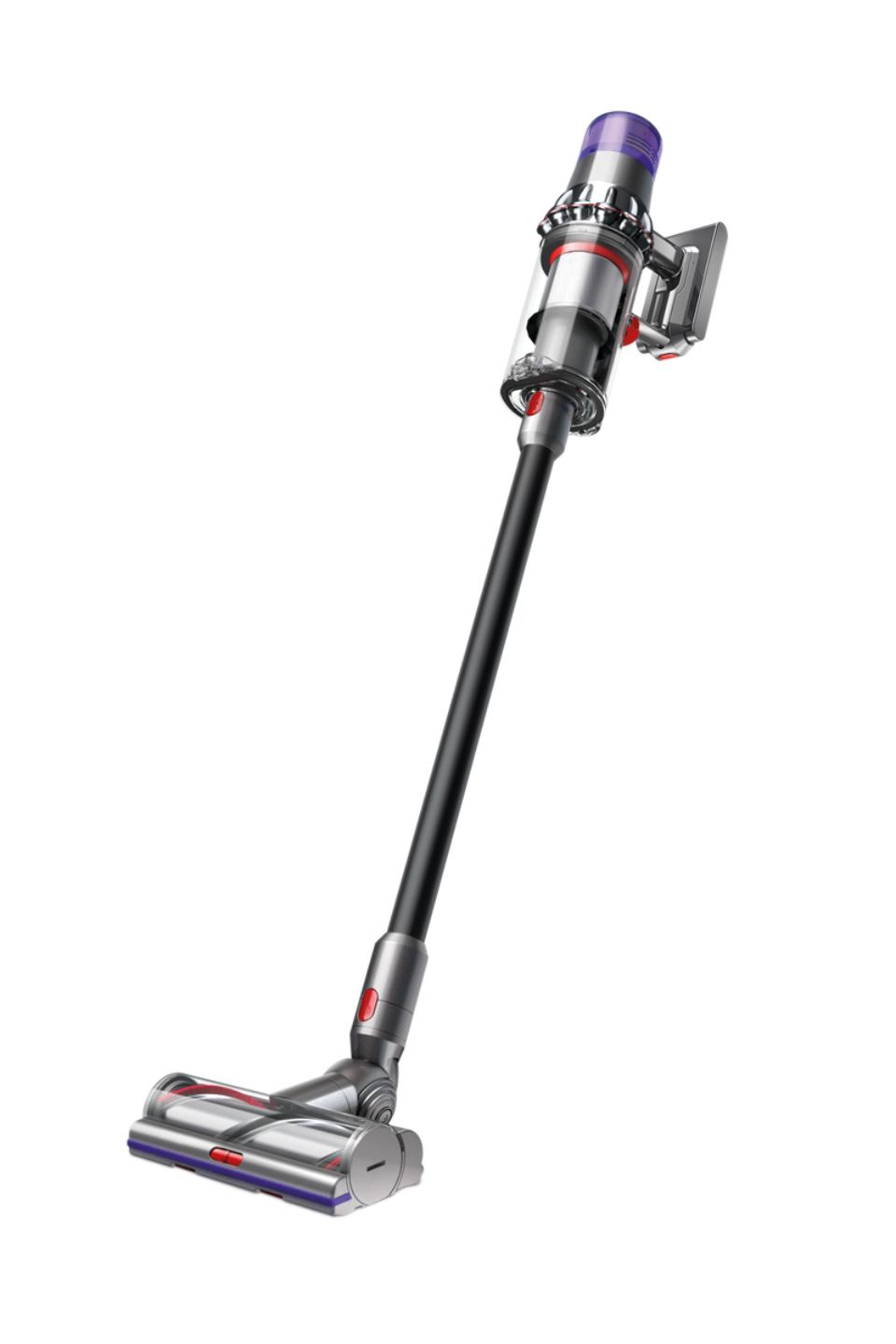Dyson Slim Ball Animal Upright Vacuum Cleaner
Removes dirt and dust on all floor surfaces. Wand-and-hose release cleans up high and under furniture. Backed by a 5-year warranty for your satisfaction.
The Dyson Slim Ball Animal upright vacuum cleaner is engineered to remove dirt and microscopic dust on all floors, for tough tasks. The advanced self-adjusting cleaner head automatically adjusts between all floor types – sealing in suction for a powerful clean across your entire home. Its wand and hose release in one smooth action to make it easier to clean up high and under furniture. Whole-machine filtration, ensures that allergens and bacteria are trapped inside the machine, not expelled back into the home for a cleaner environment. The Dyson Slim Ball Animal vacuum comes with extra tools including the tangle-free turbine tool, which removes hair from carpets and upholstery without tangling. Dyson’s free 5-year warranty covers parts and labor, plus free shipping there and back.
- Includes extra tools for tough tasks
- Designed for homes with pets. Tangle-free Turbine tool removes pet hair from carpets and upholstery without tangling
- Whole-machine filtration ensures that allergens are trapped inside the machine, not expelled back into the home.
- Self-adjusting cleaner head- active base plate automatically raises and lower to seal in suction across all floors
- Wand and long-reach hose release in one smooth action, so it’s easy to clean up high and under furniture
- Dyson’s free 5-year warranty covers parts and labor, plus free shipping there and back
- Certified by the Asthma and Allergy Foundation of America.
Additional information
| Product Depth x Height x Width (in.) | 15.6 x 41.9 x 13.4 |
|---|---|
| Cleaning Range with Tools(ft.) | 39.5 |
| Capacity | 0.42 gal (US) |
| Cleaning Path Width (In.) | 13.4 |
| Color Family | Purple |
| Commercial/Residential | Residential |
| Cord Length (ft.) | 24.5 |
| Cordless/ Corded | Corded |
| Filter Type | HEPA |
| Floor Care Features | Bagless,Bare Floor Cleaning,Carpet Height Adjustments,Cyclonic,Edge Cleaner,Pet Hair |
| Included Accessories | Crevice tool,Duster,Telescoping wand |
| Number of Attachments | 4 |
| Number of Filters | 2 |



by Sloan
I just want to throw my testimony out on top of the many… this vacuum is a miracle worker. I have a large dog who sheds, and I can say, with absolute certainty, that many a rug and carpet in my apartment have not seen the light of day FOR YEARS due to the thick layers of fur that held fast upon them. I have vacuumed, gone over every inch with a rubber broom AND a lint roller, to no avail. But once I brought this baby home, my life changed. I also want to throw this out there… I’m a petite person (4’10” to be exact) and I had no issue pushing the vacuum I received. I wouldn’t say it’s any more difficult to maneuver than any other vacuum I’ve used. I bought the vacuum on sale (~$200), but it’s worth every penny. If you’re on the fence about purchasing this miracle machine, I would recommend you take the leap. Below is a picture of the dust and fur the vacuum took from a 13’ x 14’ area that had just been swept with rubber broom
by Wilbur
First vacuum review ever! Great product, easy to assemble, a caveman could do it (if cavemen vacuumed). Feels like you’re using a professional product with guts! Buy it, but find a sale – they’re pricey.
by Ricky
I have had my Dyson for a little while now. It handles different than my old vacuum so there is an adjustment period. It is heavier as well which I had to get use to. I would recommend it to any of my friends but not to my 80 y/o mom because of its weight. You can’t beat the performance for the price though. If I had it to do over I would buy it again for sure. OH! I like the colors red and purple too! 🙂
by Harvey
The Dyson vacuum is awesome!! It picks up hair from all my animal’s. Works well on my carpet and hard wood floors. Can’t say enough about this vaccum.
by Thomas
This vacuum works so well. The suction on it is unbelievable. It is easy to clean. Very easy to operate once you get use to it. It took me some time to figure out how to control it. It turns best if you just control it by moving your wrist. The retractable hose gave me fits every time I tried to snap it back in place. I learned that it works best if you pull the handle up and back at the same time you are lifting the retractable part. It then slides down and snaps right in.
by Carol
So in love with the dyson slim ball animal vaccum. Its so easy to maneuver around and gets in places that most vaccums wont be able to reach. It has alot of detachable peices so you can vaccum anything and anywhere. It collected way must dirt than any vaccum i have ever had. Great for family’s with pets amd allergys. It is a great investment. Beat vaccum ever.
by Chris
I’ve been using my Dyson for a couple of weeks now. Hands down the best suction I’ve ever seen from a vacuum. My kids and their friends run through our house constantly and track everything you can imagine in with them. We will generally vacuum on a daily or every other day basis. I’ll use it continuously over carpet, rugs, hardwood and tile. I never stop to adjust it and the vacuum has no problems at all. Only concerns I would have is that it’s a little noisier then what I’m use to, but I’m sure I’ll get use to that. Also, it’s a little challenging to move around corners and pushing on carpets. Again, not a huge issue and something I’ll get use to. Assembly is super easy, took me about 5 minutes total to assemble and I’ve never used a Dyson before. A few parts to put together that all snap into place.
by Mama
I was given the Dyson Slim Ball Animal to try and review. I absolutely love this vacuum, I love that it can be used on carpet and hard surfaces. The Dyson vacuum looks sleek and it compact so it fits almost anywhere. I will never use my old vacuum again. I highly recommend to everyone!
by George
I am very impressed with my Dyson Slim Ball Animal Vacuum! Works better than expected with patented technology in carpeting areas. Refreshed my dull looking carpet, making it look almost new. Gave me even track marks and glides effortlessly; also it is very lightweight, which makes it a breeze to use. Maneuvers better than any flooring device I have owned in the past. The Dyson outshines all others when you transition onto hard surfaces-. It picks up pet hair, lint, and debris instead of blowing it around. The suction is amazing! I thought I kept a clean home until I used this one and saw the stuff accumulated in my canister- wow! After using it a couple times, I noticed I could breathe easier. I highly recommend this vacuum to family and friends.